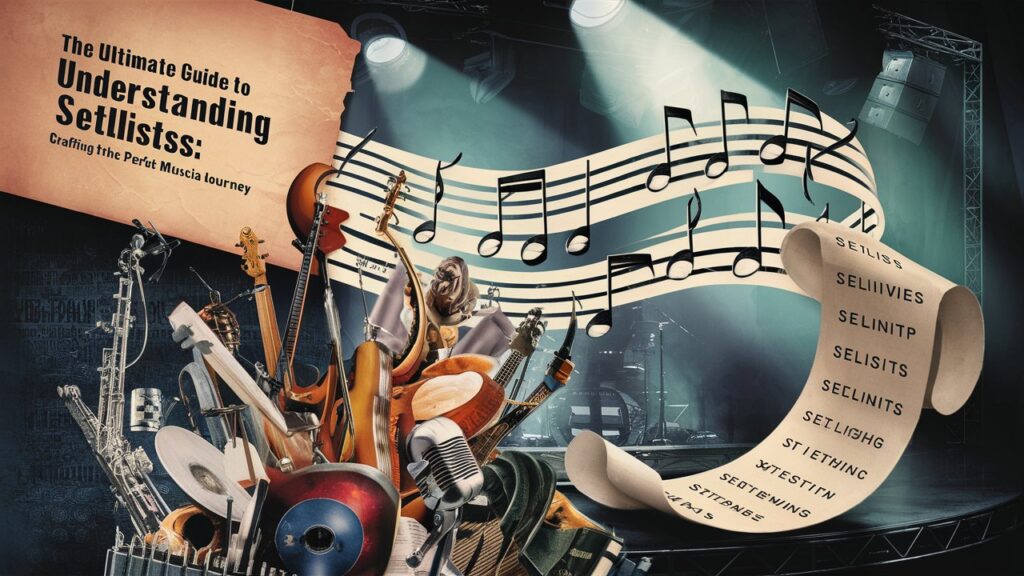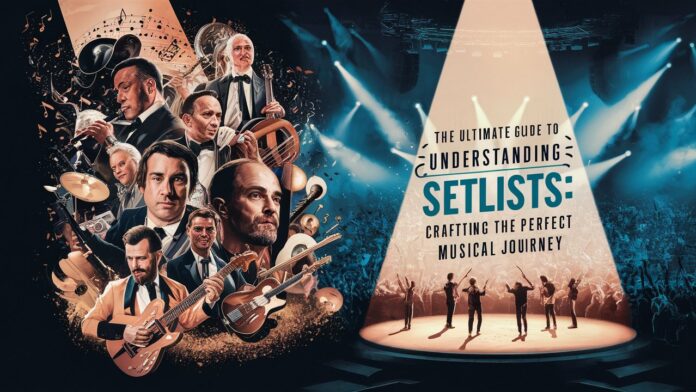Introduction
A setlist is more than just a random sequence of songs—it’s the backbone of a live performance, a strategic blueprint that shapes the emotional arc of a concert. Whether you’re a musician, event organizer, or a passionate fan, understanding the art of crafting a setlist can deepen your appreciation for live music. This article explores the intricacies of setlist creation, from balancing fan favorites with deep cuts to adapting to audience energy. By the end, you’ll grasp how a well-structured setlist transforms a good show into an unforgettable experience.
1. The Anatomy of a Setlist: Breaking Down the Components
A setlist is divided into intentional segments designed to guide the audience’s journey. The opener sets the tone, often featuring a high-energy track or a beloved hit to grab attention. The main set builds momentum, alternating between peaks and valleys to maintain engagement. This includes transition songs that bridge moods, crowd-pleasers to reignite energy, and deep cuts for dedicated fans. The encore, a deliberate pause before the final bow, often features the artist’s biggest hits or emotional closers. Understanding these components ensures a dynamic flow that resonates with diverse audiences.
2. The Art of Setlist Sequencing: Creating Emotional Arcs
Sequencing is where science meets art. A well-structured setlist follows an emotional arc, starting strong, easing into introspection, and building to a climactic finish. For example, a rock band might open with a fiery anthem, slow down for acoustic ballads, and close with a sing-along classic. Key transitions—like placing a melancholic song after an upbeat track—can amplify emotional contrast. Artists also consider tempo variations to prevent fatigue. The goal is to create a narrative that feels intentional, guiding listeners through joy, nostalgia, and exhilaration.
3. Adapting Setlists for Different Venues and Audiences
A festival setlist differs vastly from a theater show. Festival sets prioritize immediacy, packing hits into shorter slots to captivate casual listeners. In contrast, intimate venues allow for experimentation, like unreleased tracks or extended jams. Demographic factors also matter: a college crowd might crave energetic anthems, while older audiences appreciate nostalgic deep cuts. Weather, cultural context, and even the venue’s acoustics influence song choices. Flexibility is key—artists often tweak setlists mid-tour based on crowd reactions or logistical constraints.
4. The Role of Setlists in Artist Identity and Branding
A setlist reflects an artist’s musical identity. Pop acts might prioritize choreography and visual spectacle, structuring songs to align with stage effects. Indie bands, meanwhile, might emphasize raw energy, clustering guitar-driven tracks. Themed tours (e.g., album anniversaries) use setlists to reinforce branding, playing records in full or revisiting eras. Even the order of encores can become a signature—Bruce Springsteen’s marathon encores, for instance, are legendary. A cohesive setlist strengthens an artist’s narrative, turning concerts into immersive storytelling experiences.

5. Setlist Evolution: How Tours and Albums Influence Changes
Setlists are living documents. Early tour dates often serve as testing grounds, with artists adjusting sequences based on fan feedback. New album releases prompt revisions, blending fresh material with classics. Unexpected moments—like covers dedicated to local legends or tributes to late musicians—also shape setlists. Over time, recurring patterns emerge: Metallica’s “rotation system” ensures variety, while Taylor Swift’s “Eras Tour” celebrated her discography chronologically. This evolution keeps performances fresh for both artists and audiences.
6. FAQs: Common Questions About Setlists Answered
Q: How long does it take to create a setlist?
A: It varies. Some artists plan months in advance; others finalize it hours before the show. Bands like Radiohead are known for last-minute changes to keep performances spontaneous.
Q: Do artists ever repeat setlists on tour?
A: While headliners often reuse a core structure, openers and mid-tier acts may rotate songs to cater to different crowds.
Q: How do encores work?
A: Encores are pre-planned but designed to feel organic. Bands exit the stage briefly, returning for 2–3 final songs.
Q: Can fans influence setlists?
A: Yes! Social media polls, shout-outs, and fan requests sometimes shape decisions. Dave Matthews Band famously takes fan requests via handwritten notes.
Q: What happens if a performer forgets the setlist?
A: Most rely on teleprompters or stage cues. Improvisation is common—artists like Pearl Jam thrive on spontaneity.
Conclusion
A setlist is a delicate balance of artistry and strategy, reflecting an artist’s vision while responding to the audience’s heartbeat. From the adrenaline-pumping opener to the encore that leaves fans breathless, every song serves a purpose. By dissecting its components, sequencing, and adaptability, we uncover the invisible craftsmanship behind live music’s magic. Next time you attend a concert, listen closely—the setlist is telling a story, and you’re part of it.
Whether you’re curating your own gig or analyzing your favorite band’s tour, remember: the perfect setlist doesn’t just play songs—it plays emotions.


